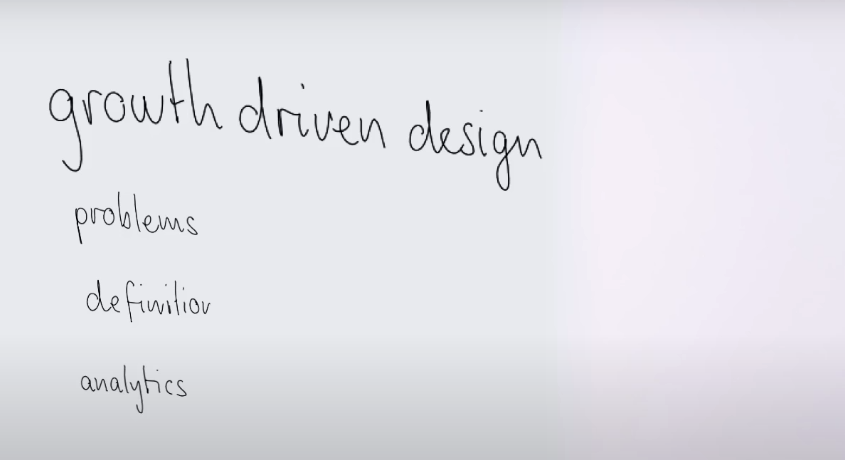What is Growth Driven Design?
What does it tell you?
- Growth driven design is process and s series of best practices
What is growth driven design and how does it compare to web design? What challenges does it solve? What is the role of analytics such as Google Analytics, HotJar, Hubspot Analytics, Kissmetrics and Mixpanel?
TRANSCRIPT
Hi. Today we’re going to be talking about growth driven design. Very specifically, what problems does it solve, what is growth driven design, and what’s the role of analytics in it? Over the last 18 months or so, we’ve been working with over 50 customers, HubSpot customers, that is. Most of them have purchased the Ferrari, which is HubSpot and all of them are very ambitious of going out and conquering some space in the internet; winning a race. However, only few are really extremely successful and why we ask.
We started looking at different behaviors and different behavior patterns and this is what we have seen. We have the blind chase player, not knowing what’s going on, no data, but just moving pieces around. Next we have the fireman, permanently emergency fixing responsive layouts, coming up with latest campaigns at [inaudible 01:00], completely reactive. Full frontal attack, meaning, I don’t know what to do, I’m just going to do everything at the same time. Data paralysis, so much data that you don’t know what to do with it and you’re not taking any action.
The gambler: let’s just change this or that, my gut tells me, great. The data addict: so much data, just getting stuck in the data, analyzing, and analyzing, and analyzing. The overall optimizer: A, B, testing every button color. Growth hacker: finding ways that every time somebody reads blog post of yours to put it out there, and republish it on some social channel. The bagger, never having a budget to do anything, and then finally, those that just sit there and watch what happens, also not taking any action.
The big question here really is what makes those companies, or what sets those companies apart from those that are extremely successful out there? If you look at it and you do a bit of research, what is known today is that, what these companies do is really they develop habits and they engineer processes that promote a culture of growth. They make growth a center piece of everything they do in the company from market to product development.
The question is what is growth driven design? Growth driven design as a basic idea tries to eliminate this idea of redesigning a website every two years or so, but rather looks at it as a continuous process with smaller steps. Launch something small and do iterative small steps based on data to improve your performance. In other words, it’s really a collection of best practices, processes, and a set of tools that allow you to do that.
Now, the interesting thing is that more things like growth engineering, or in this case growth driven design, are fundamentally a new idea. In the back, all of these ideas are based on, guess what? The scientific method, which is over 2000 years old. It’s a simple idea of taking and doing some research, building hypothesis, then taking the hypothesis, test it, analyze it, and knowing from it, and then take this in cycles. If you think about this in terms of a marketing perspective, what this does, it simply makes you a smarter investor. You build an investment hypothesis, you do the investment, you look at the result, and you either repeat or increase your bet or you change your hypothesis.
To wrap this up, remember, just like in sales, you’re success and growth driven design or growth engineering is first driven by activity, then by process, and then by skill. There’s only one choice left, get started. Thank you for watching. My name is Tim Delhaes. I’m Co-Founder and CEO of InboundLabs.

From Idea to Digital Product
Be assured that at the end of this journey you will re-emerge with more clarity, see new opportunities and threats, and hopefully have your own vision of where these technologies are leading us: a new vision of the meadow.
download